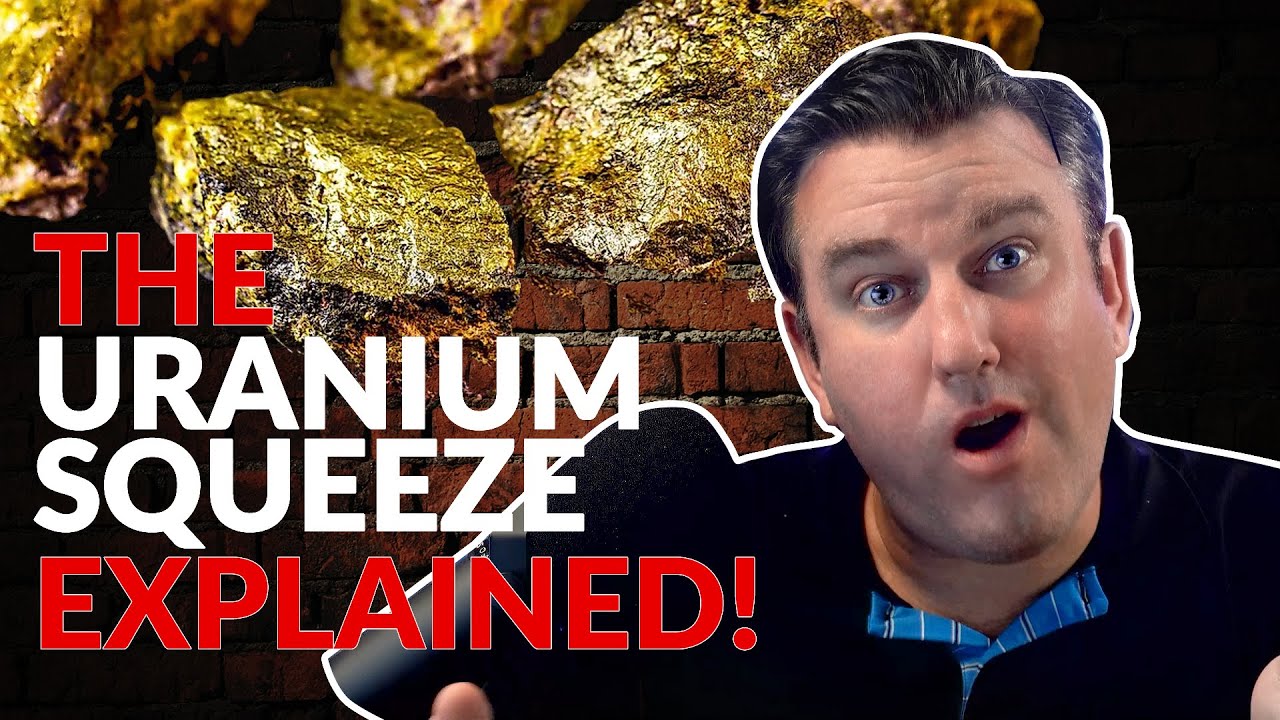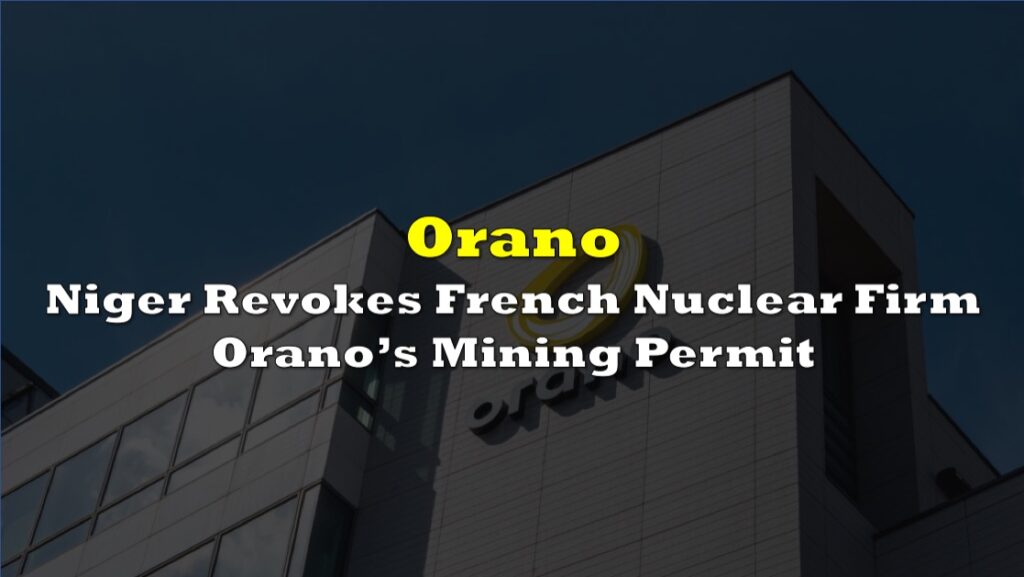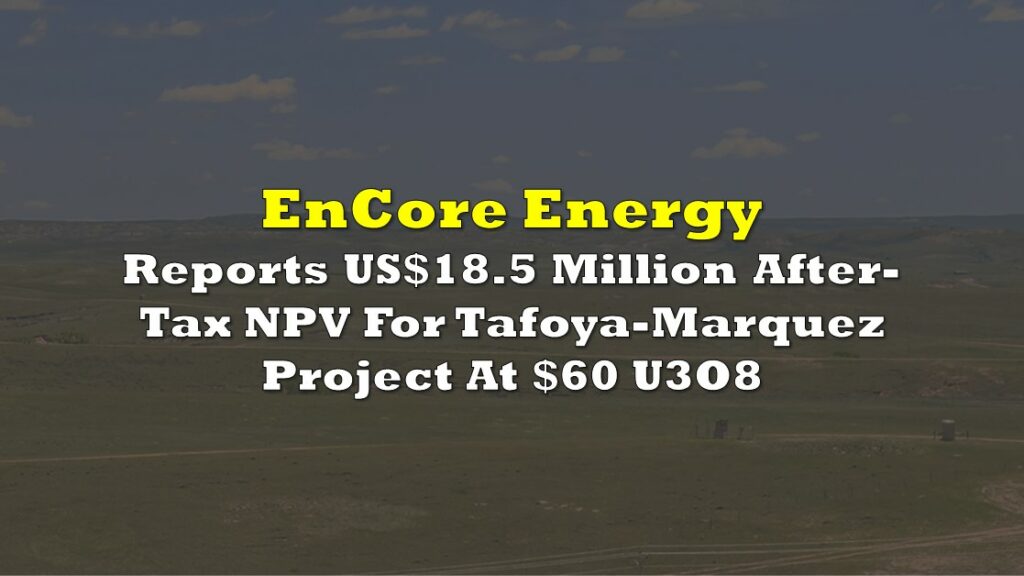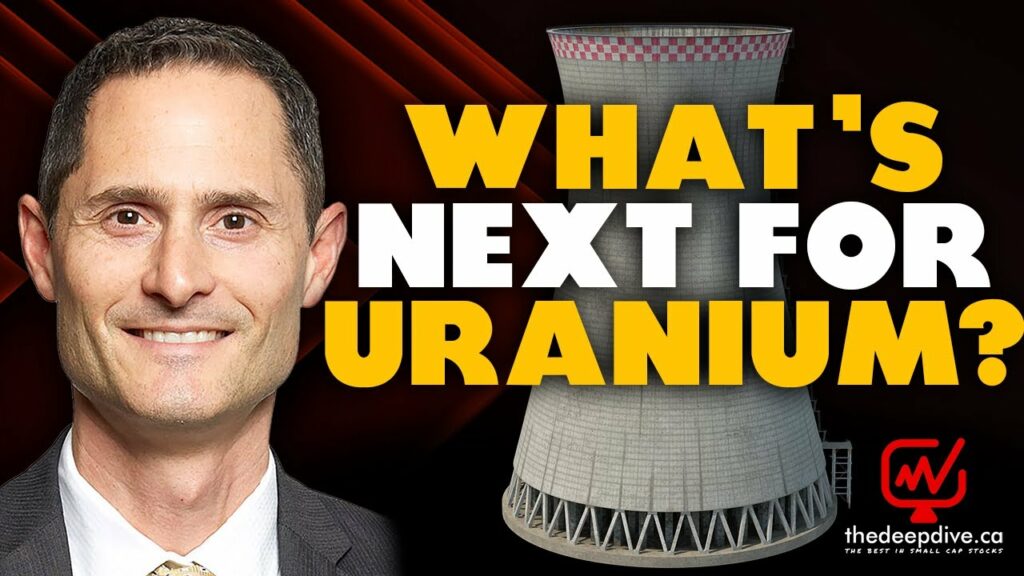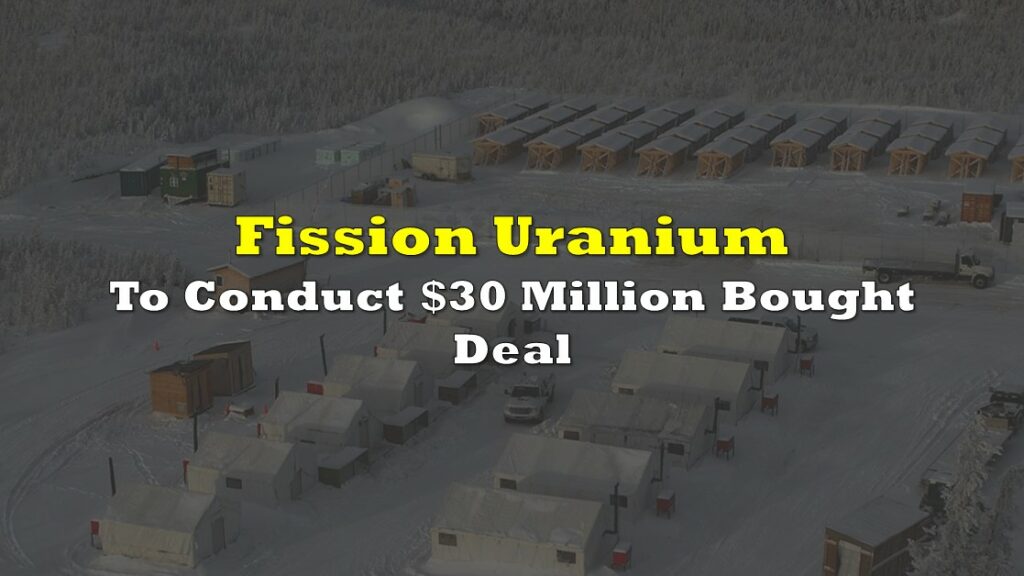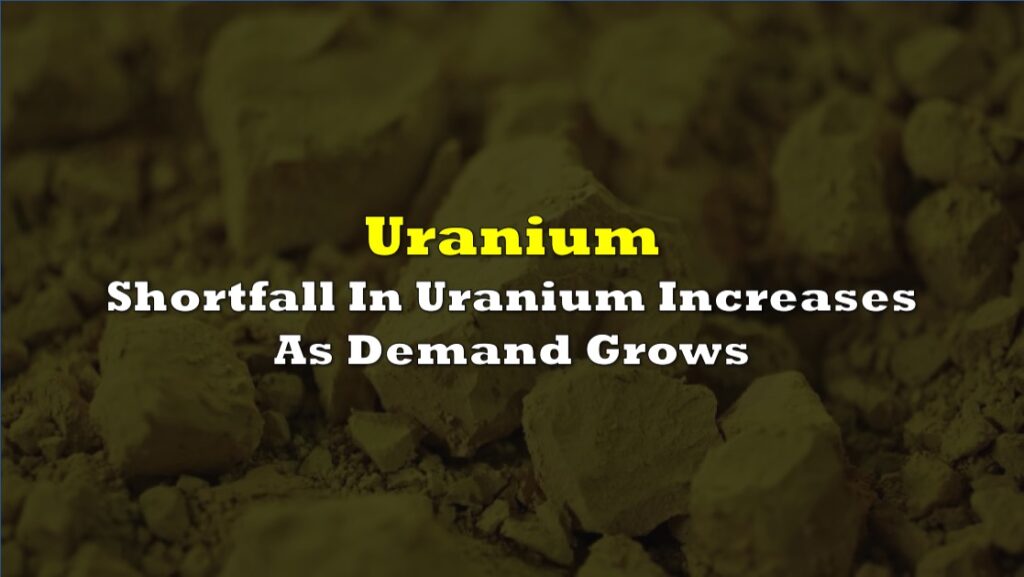Ever notice how Michael Buble pops his head out of the ground like a hedgehog every December to sell Christmas albums? Well Uranium bulls do the same thing every year in January, and are relentless in telling us that “This year is the year! Uranium is going to come back!”
They say a broken clock is right twice day. And oh baby, we may have reached that time of the day for Uranium. It’s time we start snorting that yellow cake, because Uranium is back baby!
In case you’re new to Uranium, here’s what you need to know:
- Uranium is a heavy metal, so heavy it sometimes gets used in keels of yachts and as counterweights for aircraft control surfaces.
- It is the key to nuclear power generation.
- It’s 18.7 times as dense as water, has a melting point of 1132 degrees celsius, and is primarily found in Australia, Kazakhstan, and Canada.
The big takeaway if you’re looking at investing in uranium and nuclear power is that it could be our ticket to a carbon neutral future. Don’t believe me, just ask Bill Gates or Elon Musk.
Uranium is beloved by retail investors for the simple reason that it has the ability to go parabolic. The annual production sits at around 125M pounds of uranium with annual demand around 190M pounds. Priced in today’s dollars of $50/lb it puts annual demand around $8.5B.
We can find articles dating back to the early 50s of Uranium investors holding the metal with expectations of massive returns. Over the last 70 years we have seen various booms and busts; with the most recent bull cycle occurring from 2004 to mid 2007 where we saw the price rally from around $15 to a high of $136.

The price then settled in nicely around $40-50, which was followed by the Fukushima Da-ii-chi nuclear disaster in March 2011, which saw Japan who at the time had 54 nuclear reactors operating, electing to shut down the vast majority of them with only 10 reactors active today. The price of uranium then sank to a low of just under $20 in 2016.
With only 443 nuclear reactors active today around the world, we can see how a country with just 50 reactors can have a massive impact on the supply and demand balance for the uranium market.

But, after fourteen years of endless hoping, it appears the uranium bulls time may have finally come again.
At the time of filming, the yellow metal is currently trading at $50 and change. Up over 80% since a 1 year low of $27.60, and it appears things are just beginning.
The largest piece of the global nuclear power demand is the United States who has 94 nuclear reactors operating with 2 more under construction and 3 more planned. Second place is China with 49 operating reactors,16 under construction, 39 more planned.

And of course, let’s flip back to Japan where Prime Minister candidate Tara Kono, who leads polling to win the popular vote generally wants Japan off nuclear power, but seemingly wants to ramp it up in the short run… Creating some medium term demand for the yellow powdery stuff.
“What I’ve been saying about an exit from nuclear power is decommissioning quickly nuclear power plants that are reaching retirement and gradually exiting nuclear energy…. As I explained before, we should stop the use of coal, increase energy conservation and renewable energy and nuclear power can be used to fill the gap.”
Fundamentally, things are shaping up nicely for Uranium, but what’s behind the sudden squeeze?
It started in March 2021 when Denison Mines, operator of the under-development Wheeler River project in Saskatchewan’s Athabasca basin, announced that they planned to raise US$75 million in a bought deal financing, the proceeds of which would be used to purchase uranium from the spot market for keeping in a strategic reserve.
As Deep Dive Contributor Braden Maccke tells us at the time, “A mining company purchasing reserves of its main product is rare, the object of the mining business being, generally, to turn the commodity into cash, and not the other way around. But Denison clearly knows its audience, who responded favorably with an over-subscription to the deal, which was closed this past Monday, March 22nd bringing gross proceeds of $86.27 million.”

And then the bat signal suddenly went off at Sprott Asset Management headquarters in July, when they announced the creation of the first ever Physical Uranium Trust allowing retail investors an opportunity to directly drive investment demand in physical uranium via the stock market.
Now our old friend WallStreetBets catches on and suddenly we got ourselves an ole fashioned rally. The annual spot market volume of around 100M lbs or around $3B USD, wouldn’t take much buying beyond what Dennison pulled earlier to make sparks start flying in the spot market.
The Sprott Physical Uranium Trust started in July when uranium was priced at $32.30. As its name suggests, the fund was established to hold physical uranium, specifically U3O8, providing investors direct exposure to the physical asset. The fund is listed on the TSX under the symbol “U.UN”, and it’s expected to get a US big board listing at a later date.
The trust was established as a closed-ended trust. What this means, is that unlike an ETF, when investors sell off the fund, Sprott does not have to sell uranium to fund the outflows – meaning it stays in the vaults, and does not hit markets. As one Reddit user puts it, it makes the fund “structurally diamond handed.”
The fund started out at a relatively decent size – $600 million, not bad for a new trust. But they wanted more. Much, much more.

So, how do they grow their assets under management?
The trust has taken the easy path for this. To enable new unit creation they use something called an ATM or an “at the market financing.” Meaning, they sell new units on the open market, in this case, whenever the value of the unit is above the NAV for current units.
Any proceeds raised from the ATM financing goes directly to the purchase of more physical uranium.
Here’s where it gets interesting. The first ATM announced by the trust began on August 17 – the most recent low for uranium. At the time, Sprott announced that the trust would be conducting a US$300 million financing to fund further uranium purchases. By the end of August, AUM had grown from $600 million to $754 million, with the trust holding $741 million worth of uranium – or roughly enough uranium to power all of France for 10 months.

So as the momentum continues.. well the ATM suddenly fills.
So what does Sprott do? They go back for more. Announcing a second ATM financing – this time to the tune of US$1 billion.
Why is this substantial, other than for the fact its a BILLION dollars? As of the day of the announcement, the entire fund itself had assets under management of US$1.13 billion – that means they are looking to very quickly DOUBLE the value of all uranium it holds in physical trusts. A billion dollars at $50 per pound represents around 20% of the world’s annual production. And at this rate, Sprott appears to be filling these ATMs in a matter of weeks.
So could we get to the point where Sprott is buying up uranium to the tune of over 100M lbs a year? If that happens, there goes annual supply and who knows where the price ends up.

So if you’re catching on here, you’re realizing the Uranium market is small. Very small. Current production is estimated at a little over 125 million pounds per year, while demand is estimated at being 190 million pounds for 2021. At $30 uranium, that’s roughly a $5.7 billion market. Which is wild, given the supply / demand imbalance. There are literally cannabis stocks valued higher than the entire uranium market right now.
What’s also valued higher? Why, GameStop of course. And look at the number WallStreetBets did to them.
On that topic, roughly two months ago, uranium had its “RoaringKitty” moment on WSB – in the form of a user named “RadTheReptile”. The user published a post, titled “The Uranium Thesis: have your cake (but don’t eat it),” which is viewed as one of the origins of the rising demand for the metal.
The post outlined many facets of the market, including the rising demand for clean nuclear energy, how its used, and the commodity market behind the metal, including the involvement of hedge funds. One key point, is that until we reach $50-60 per pound, mines are unlikely to start up – causing a further supply glut. While specific stocks were not mentioned, it began a chain of events.
As small cap investors know, sentiment is everything.
So where is uranium headed? Well, if Sprott’s activities are any indication, it’s higher. One twitter user who has been notably on the money with several uranium price calls, @BambroughKevin, was expecting the metal to hit $55 per pound by year end – however earlier last week he said this target “will likely get blown away.” He’s also suggested that $180 per pound might be achieved by March 2022.

And of course, as one would expect, buying begets buying, and we are now seeing copycat funds partake in the Uranium squeeze, with Uranium Royalty Corp announcing they acquired an additional 648k pounds of physical uranium.
The keys takeaways if you’re reading this:
- Nuclear is the key to a carbon neutral future.
- Nuclear requires uranium.
- The uranium market is very small.
- Uranium had the introduction of it’s first physical ETF in July 2021.
- This event has made the price of the commodity increase by 80%.
- And it appears the momentum is getting stronger.
What happens next is anyone’s guess, but my god, we may have an ole fashion squeeze. And this time instead of squeezing the hedgies, we’re squeezin’ the utilities.
Information for this briefing was found via Sedar and the companies mentioned. The author has no securities or affiliations related to this organization. Not a recommendation to buy or sell. Always do additional research and consult a professional before purchasing a security. The author holds no licenses.

